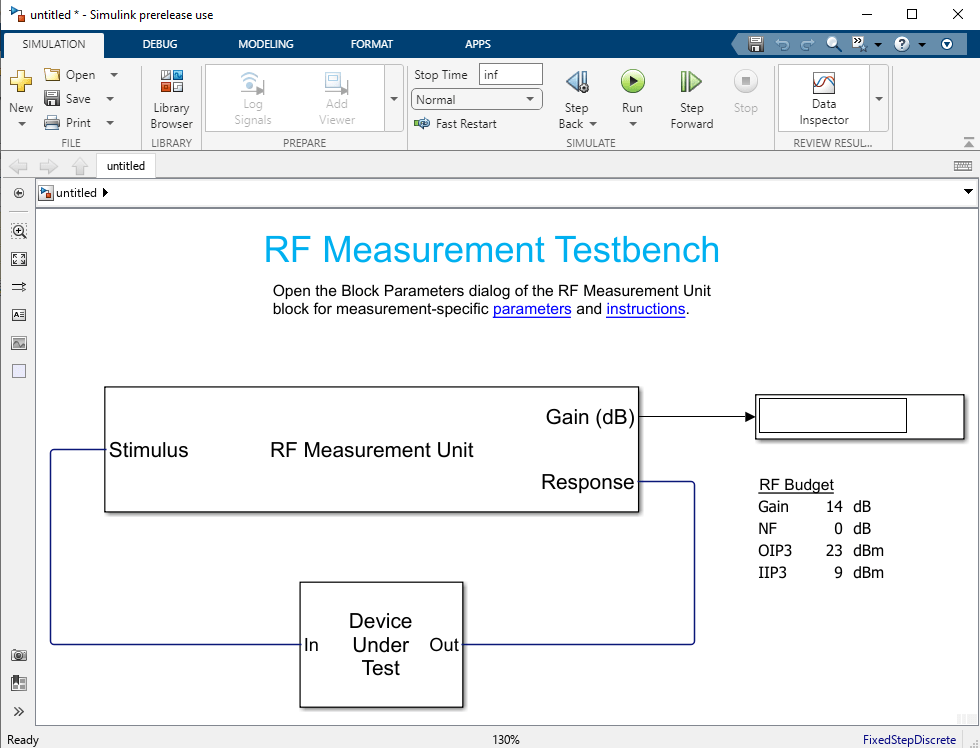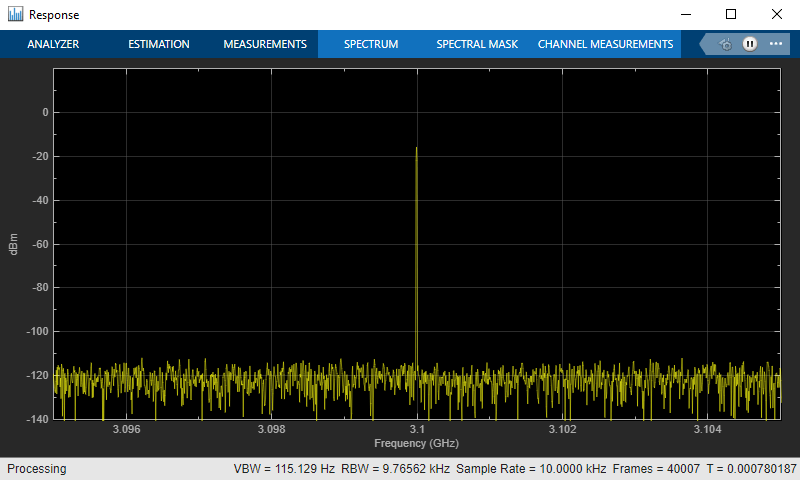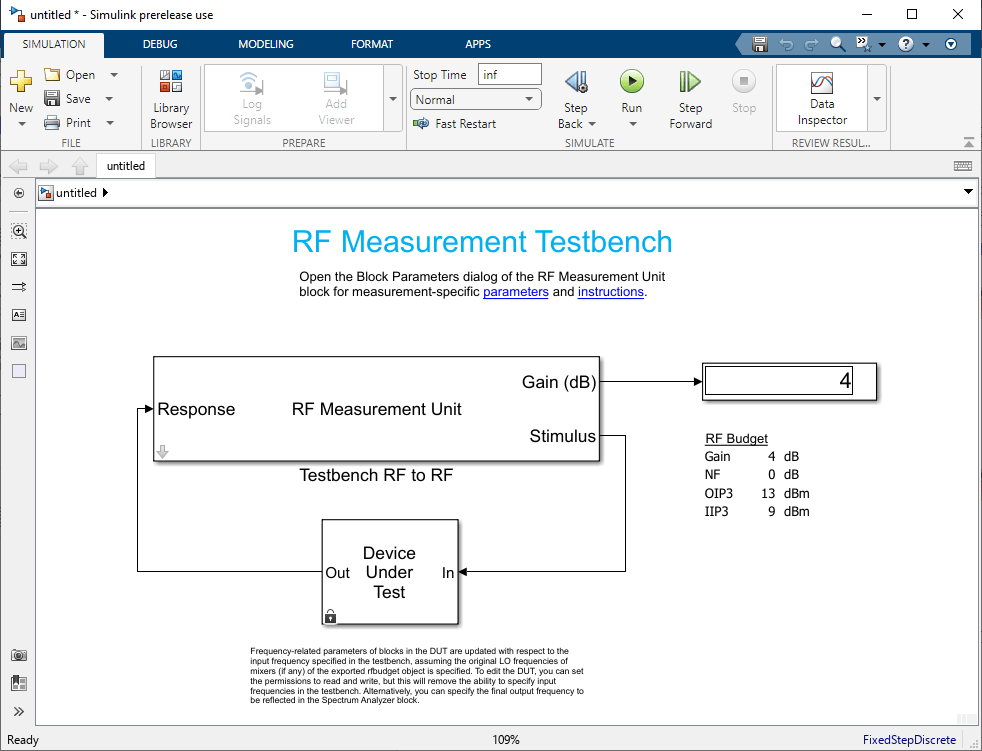exportTestbench
Export RF budget object to RF Blockset measurement testbench model
Syntax
Description
exportTestbench(
exports the RF budget object rfobj)robj to a
measurement testbench model in the RF Blockset™ Circuit Envelope library environment. You can then use
the model to measure the cumulative gain, input second-order intercept
point (IIP2), output second-order intercept point (OIP2), input
third-order intercept point (IIP3), output third-order intercept point
(OIP3), noise figure, noise floor, and DC offsets.
exportTestbench(
exports the RF budget object to a measurement testbench model in the
RF Blockset Idealized Baseband library environment. You can then use
the model to measure gain, intercept points, and noise floor.
Idealized baseband simulation provides shorter simulation time because
the simulation assume perfect impedance matching and a nominal
impedance of 1 ohm in the RF system. (since R2023a)rfobj,Library='IdealizedBaseband')
sys = exportRFBlockset(___)
Note
The exportTestbench function requires
a license for RF Blockset and DSP System Toolbox™.
Examples
Input Arguments
Version History
Introduced in R2017aSee Also
rfbudget | show | computeBudget | exportScript | exportRFBlockset | rfplot | smithplot | polar




